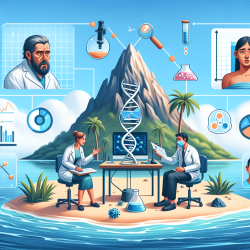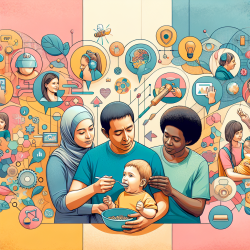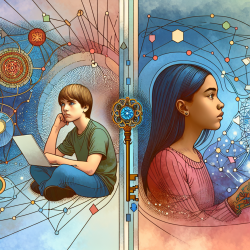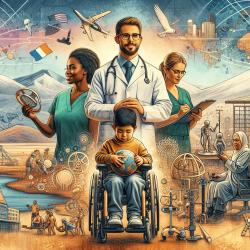Why Robinson Crusoe Island?
Robinson Crusoe Island (RCI) is an isolated Chilean island with a unique genetic makeup. The population, primarily descended from a small group of founders, exhibits a high prevalence of language disorders—estimated to affect one in three children. This rate is ten times higher than on the mainland, providing a unique opportunity to study genetic factors influencing language development.Key Findings
The research revealed several important findings:- A significant European genetic contribution to the current RCI population, with 79.1% of mitochondrial haplogroups and 92.3% of Y chromosome haplogroups being European.
- Substantial indigenous genetic admixture, accounting for 46.9% of the population’s genetic makeup.
- Identification of specific genetic risk factors, such as the NFXL1 gene, which explains 17% of the variance in language disorders.
Practical Applications for Practitioners
By understanding these genetic underpinnings, speech-language pathologists can tailor their approaches more effectively. Here are a few ways to apply these insights:- Personalized Therapy: Use genetic information to personalize therapy plans. For example, knowing that a child has a genetic predisposition to language disorders can guide the choice of interventions.
- Early Intervention: Genetic screening can help identify at-risk children early, allowing for timely intervention that can mitigate long-term impacts.
- Family Education: Educate families about the genetic aspects of language disorders, helping them understand the importance of early and consistent therapy.
Encouraging Further Research
The study underscores the importance of further genetic research in isolated populations. Such research can uncover additional genetic factors influencing language development, leading to more effective therapies. Practitioners should advocate for and participate in research initiatives to continue advancing the field.Conclusion
Incorporating genetic insights from studies like the one on Robinson Crusoe Island can revolutionize speech-language pathology practices. By making data-driven decisions, practitioners can create better outcomes for children, providing them with the support they need to thrive.To read the original research paper, please follow this link: The Genetic Population Structure of Robinson Crusoe Island, Chile.










